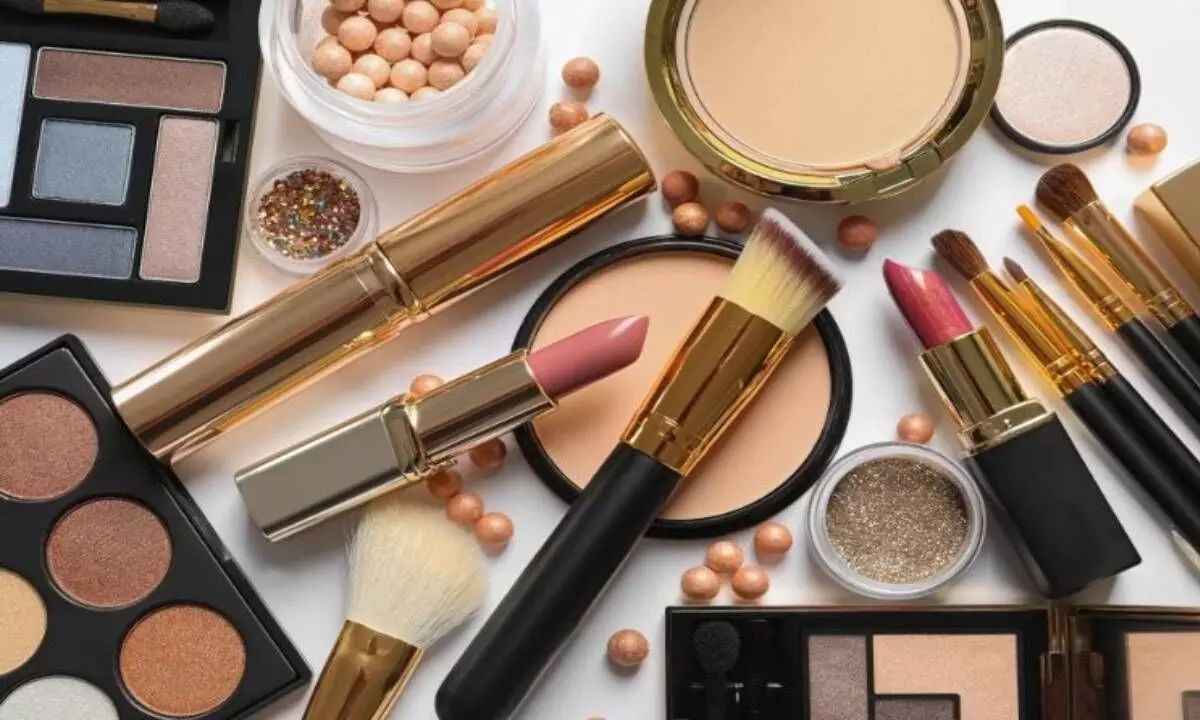Resilience, innovation giving cosmetic edge to beauty industry’s recovery
Brands are increasingly banking on online platforms and supply chains
image for illustrative purpose

The global beauty industry stands as no exception to the disruption caused by the Covid-19 pandemic. However, its story of recovery and even growth is an outstanding example of resilience and innovation. The industry has aptly dealt with the negative effects of the pandemic, with the changes becoming prevalent in the times to come.
The use of e-commerce is continually rising and brands are increasingly banking on online platforms and supply chains to be relevant in unexpected situations. Beauty brands across the world are focusing on providing the best-in-class experience to their consumers as the pandemic’s after-effects wane.
Online shopping gaining in relevance: Digitisation rose to prominence during the pandemic and the beauty sector stepped in to increase its digital presence. With the implementation of a robust digital marketing strategy and e-commerce experience, beauty brands are hoping to increase sales and appeal to varied lifestyles.
Brands are enhancing the virtual shopping experience through Artificial Intelligence (AI) to recreate in-store beauty counters and compensate for the feeling of smell, swatch and sampling of the products. By merely optimising images and videos of their products, the industry is looking to provide an in-depth look at the customers' preferences sitting in the comforts of their homes.
Technology enabling innovation: The beauty industry has forged a deep partnership with technology. By adopting innovations, they are offering novel experiences to consumers. Platforms like websites and mobile applications are integrating technology to offer personalised solutions.
Brands with digital presence are more interactive than ever before, thanks to technology. Voice assistance, chatbots and in-app quizzes have made consented data collection possible to analyse consumer behaviour, trends, needs and demands.
Entrepreneurship and new D2C brands: Post-pandemic, businesses focused on beauty – from lip balms, cheek tints and more found a medium of business in social media. Numerous success stories empowering women and the youth made their way to social and media streams.
The route of D2C brought consumers and businesses closer with increased brand connections. The whole phenomenon of D2C humanised the consumer-brand connection and continues to flourish.
Rise of skincare routines: With working from home, physical distancing, and mask-wearing becoming a norm skincare was brought into focus as brands witnessed consumers opting for products with health functions.
Products like serums, hydrating masks, face oils, and beauty tools like guasha and face rollers started gaining popularity. There was an increased use of DIY skin care and brands diversified their portfolio to provide homemade solutions to cater to the changing consumer needs. Skin health became the focus area and it continues to be so post-pandemic.
The makeup Renaissance: After almost two years of lull, consumers are now making up for the lost time. They are more than eager to go out, celebrate with their friends and family and travel around the world. For the beauty industry, this has translated into a higher traction for makeup products.
Now consumers want to look their best and express themselves through makeup. Some of the trends we have seen in the makeup category include abstract eyeliners, colour pops of neon, bold blushes, and everything glitter.
Importance of personalisation: Resonating with Epilson’s survey, which indicated that 80 per cent of consumers are likely to buy a product if it offers personalisation, brands are innovating in terms of personalized beauty treatments, products, and supplements. The age-old idea of ‘one-size-fits-all’ and universal products does not align with the new consumer’s preferences and expectations. They are looking for solutions that are specific to their needs.
Integration of technology is the buzzword to help consumers with hyper-personalised recommendations. Research and data have become keys in driving these efforts. Brands are also witnessing a higher sense of loyalty toward them through personalised offerings.
Hyperlocal models of delivery: The path from discovery to delivery is increasingly faster now. Before the pandemic, the idea of beauty products being delivered within a day was talked of as a distant reality. Today, however, brands and service providers have gone one step further to bring orders to your doorstep within two hours! Hyperlocal delivery models are facilitating this transition, bringing in convenience and efficiency to the consumer and the marketer. Being focused on specific geographical spaces, they open avenues to draw cultural insights and deliver customised experiences.
Content as a medium: With increased screen times, the path from online discovery to delivery, content to commerce is more relevant now. Over the past few years, content formats like short videos and tutorials have become a mouthpiece of beauty brands to reach their target audience.
Today, we see a shift away from traditional ideas and collaborations with digital influencers. In an ever-expanding competitive market, brands are more open to experimentation. The idea of brands closely collaborating with content creators through blogs and social media has proven incremental in enticing and informing consumers.
Ethics and values matter: The pandemic put a lot of things into perspective. Today, consumers are more informed and are looking to be associated with brands that align with their values. They want companies to respect their values and individuality.
In this manner, brands are intending to become more eco-aware, transparent, ethical and consumer-centric. This can include anything from being plastic-free, supporting women empowerment, against animal cruelty to understanding diversity.
(The writer is the founder and CEO of KultApp)

